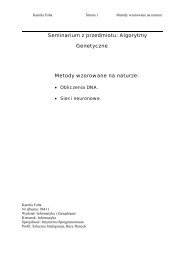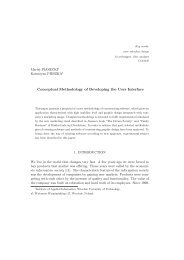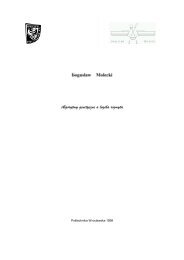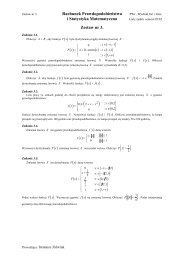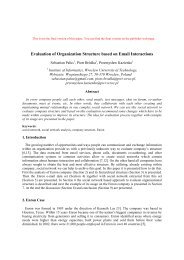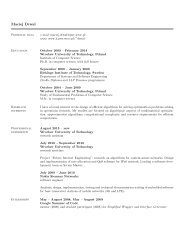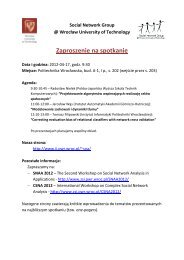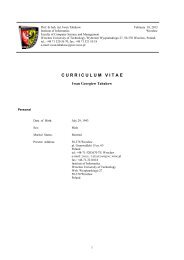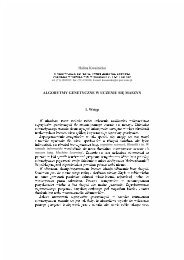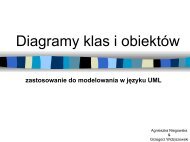Technical Report - Microsoft Research
Technical Report - Microsoft Research
Technical Report - Microsoft Research
Create successful ePaper yourself
Turn your PDF publications into a flip-book with our unique Google optimized e-Paper software.
contract. The installation of additional video drivers may be disallowed, or only a single videodriver activated at boot time.As described in Section 4.9, Compile Time Reflection (CTR) is used to generate trustedcode to initialize in-process objects for referencing system resources. The CTR templates executeat install time using the attributed program elements in the assemblies named by the applicationmanifest.The installation process is completed by updating the system manifest metadata toincorporate the new application or device driver.In the current implementation the entire installation process takes place offline with aninstallation becoming visible only at the next system boot. This purely off-line installation may betrivially augmented with on-line installation, but on-line installation has not yet been required byour usage scenarios.5.2.4 Run TimeAt run time, metadata drives the initialization of the kernel, device drivers, services, andapplications. The boot loader reads a portion of the system manifest to determine which kernel,device drivers, and services should be loaded. The order in which these load and start executing isnot specified anywhere; instead the system infers it from the specified dependencies.As each application is started, the kernel verifies and resolves all metadata dependencies andbuilds a process configuration record in the kernel. Trusted code, emitted into the applicationusing CTR, parses the configuration record, instantiates local objects for accessing externalresources, and puts the local objects into a configuration object in the process’ object space.Returning to the example of the S3Trio64 device driver, the kernel records in the driver’sconfiguration record the need for IoMemoryRange objects for frameBuffer, textBuffer,and fontBuffer. The kernel also records the IoPortRange objects for control, advanced,and gpstat I/O ports. The kernel creates a channel to connect the device driver to the I/Osubsystem and a second channel to connect the driver to the namespace. The channel endpointsare added to the driver’s configuration record.When the device driver starts executing, trusted code in its runtime creates the appropriateIoMemoryRange and IoPortRange objects in the driver’s object space. Because these objects’constructors are accessible only to the trusted runtime code, a device driver only can access I/Oresources declared in its metadata and checked for conflicts by the kernel I/O subsystem.Declaring channel endpoints in application metadata ensures three important properties.First, code for a Singularity process can be statically verified to ensure that it communicates onlythrough fully declared channels, in strict conformance to the channel contracts. Second,applications do not contain global names. For example, the S3Trio64 video device driver isunaware of the /dev/video name in the system namespace. Instead, the driver uses a localname, S3Trio64Config.video, to refer to a channel with a given contract(ServiceProviderContract). The entire layout of the I/O namespace can change withoutaffecting a single line of code in the video driver. Third, applications can be sandboxed, inconformance the principle of least possible privilege, to remove a source of error and securityvulnerability in current systems. For example, although the S3Trio64 driver holds an endpointconnected to the system name space, the driver has no ability to create new names or to connectto any other system process.25



